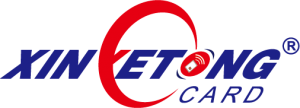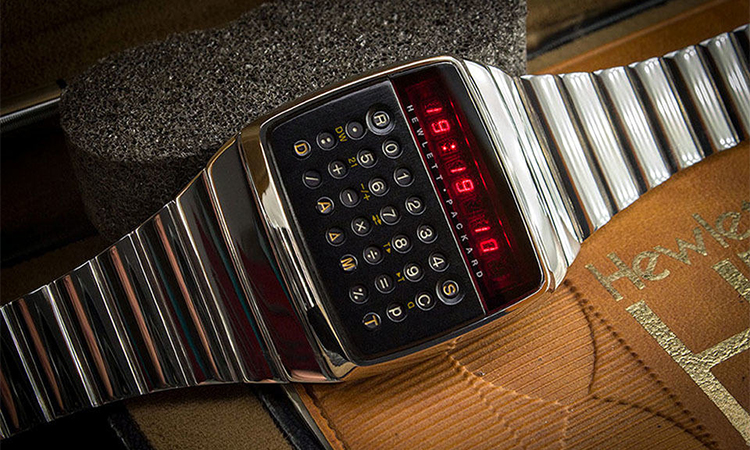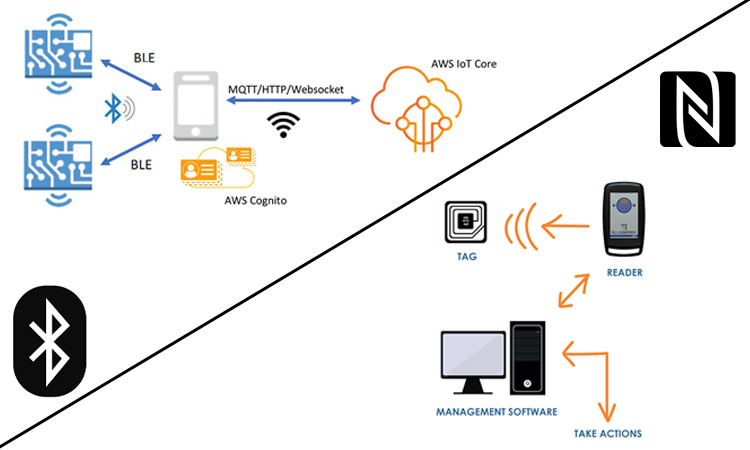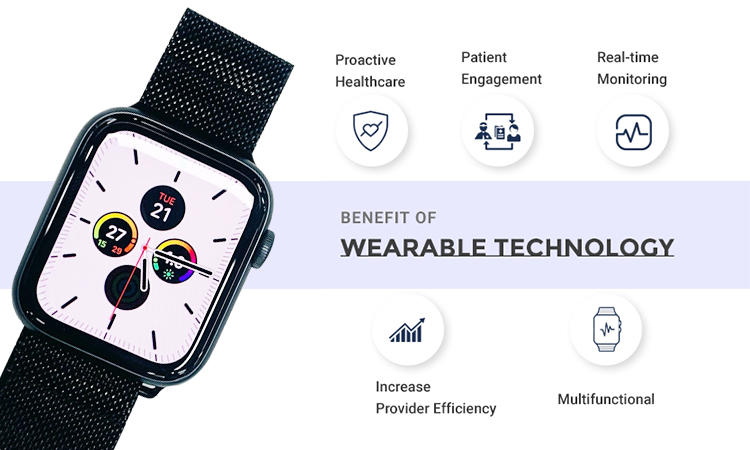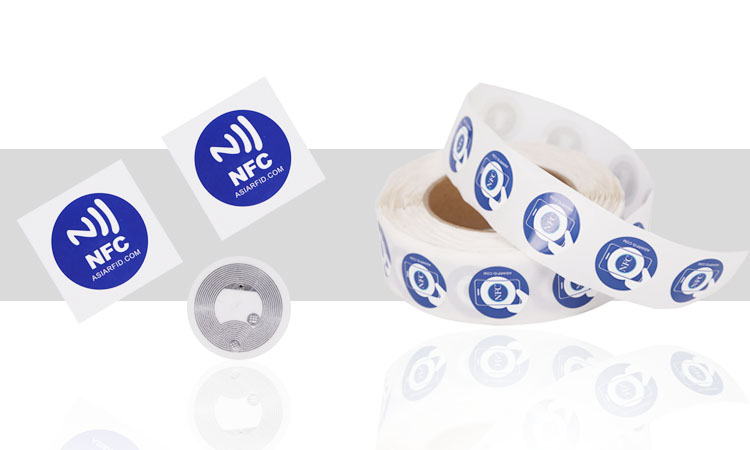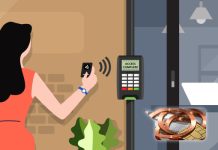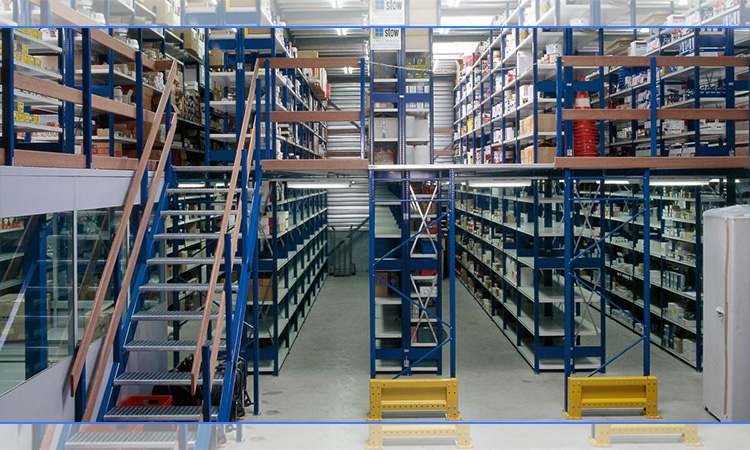실시간 위치 시스템은 지정된 RF 적용 범위 내에서 사람이나 항목을 찾고 추적할 수 있습니다. 올바른 추적 기술을 선택하면 기업이 직원과 장비를 추적하는 데 도움이 될 수 있습니다. 이 기사는 실시간 위치 시스템의 유형과 일부 관련 응용 프로그램에 중점을 둡니다.
실시간 위치 시스템이란 무엇입니까?
실시간 위치 시스템(RTLS)은 실시간 추적 시스템이라고도 합니다. 주로 자산을 찾고 관리할 수 있는 일련의 시스템을 통해 특정 대상을 식별하고 추적하는 데 사용됩니다. 그들이 추적하는 대상은 사람이나 물체일 수 있습니다. 자산의 시간을 추적하고 다른 애플리케이션에 의존하여 해당 데이터를 다르게 사용할 수 있습니다. 일반적인 예: 일부 애플리케이션은 자산이 특정 영역을 통과한 시점의 타임스탬프만 제공합니다. 다른 RTLS 애플리케이션은 실시간으로 보다 세분화된 가시성을 확보해야 할 수 있습니다.
Wikipedia는 다음을 설명합니다. 실시간 포지셔닝 시스템의 기원:
RTLS라는 용어는 ID EXPO 무역 박람회에서 Tim Harrington(WhereNet), Jay Werb(PinPoint) 및 Bert Moore(Automatic Identification Manufacturers, Inc., AIM)에 의해 만들어졌습니다(1998년경). 활성 RFID 태그의 자동 식별 기능을 제공할 뿐만 아니라 컴퓨터 화면에서 위치를 볼 수 있는 기능을 추가한 새로운 기술을 설명하고 차별화하기 위해 만들어졌습니다.
대부분의 RTLS는 스마트폰이나 일부 내비게이션 시스템과 같은 제품에 내장되어 있습니다. RTLS는 신호를 전송하는 무선 노드와 신호를 수신하는 리더로 구성됩니다. 주로 다음과 같은 무선 기술을 기반으로 합니다. 블루투스, RFID, GPS 등
RTLS는 여러 산업에서 사용할 수 있습니다. 이러한 산업은 의료, 군사, 소매 및 엔터테인먼트가 될 수 있습니다. 제조 및 광업과 같은 특정 응용 분야의 일부 산업도 적용 가능합니다.
RTLS 시스템 부품
실시간 위치 시스템 솔루션은 시설 또는 영역을 통해 사람, 장비 또는 자산을 자동으로 추적합니다. RTLS 시스템은 다음과 같은 몇 가지 핵심 구성 요소로 구성됩니다.
- 트랜스폰더: 찾으려는 항목에 부착된 작은 태그 또는 레이블입니다. 트랜스폰더는 트랜스폰더의 ID와 위치를 식별하는 고유하게 코딩된 무선 주파수 신호를 방송합니다.
- 수신기: 근처 트랜스폰더의 신호를 감지하기 위해 관심 영역 전체에 배치됩니다. 수신기는 신호를 각 응답기의 위치를 결정하는 위치 데이터로 변환합니다.
- RTLS 소프트웨어: 수신기의 데이터를 통합하여 삼변 측량과 같은 알고리즘을 사용하여 위치를 계산합니다. 이 소프트웨어는 응답기의 위치와 움직임을 지도나 다이어그램에 표시하여 위치를 실시간으로 모니터링할 수 있습니다.
특정 애플리케이션에 필요한 정확도와 적용 범위에 의존하는 데 사용되는 기술 및 시스템 설계. 옵션은 다음과 같습니다.
- 무선 주파수(RF) – 근거리 추적을 위해 전파를 사용합니다. 실내 공간에 좋습니다.
- 초광대역(UWB) – 정확한 위치 추적을 위해 무선 펄스를 사용합니다. 고밀도 배포의 경우에도 정확도가 높은 옵션입니다.
- 와이파이 – 현지화를 위해 기존 무선 네트워크 인프라를 활용합니다. 정확도는 제한적이지만 비용은 저렴합니다.
- 적외선 – 가시선 추적을 위해 광 신호를 사용합니다. 단거리이지만 무선 주파수 라이센스는 필요하지 않습니다.
- 지그비 – 추적을 위해 저전력 트랜시버 네트워크를 사용합니다. 적당한 범위와 정확도, 저렴한 비용.
- 클라우드 기반 RTLS – 향상된 정확도, 범위 및 확장성을 위해 클라우드에서 여러 기술 및 알고리즘의 신호를 결합합니다.
실시간 위치 시스템은 어떻게 작동합니까?
실시간 위치 시스템의 특정 작동 모드는 선택한 시스템에 따라 다릅니다. 모든 RTLS는 연결된 하드웨어 및 소프트웨어 구성 요소의 네트워크를 활용한다는 공통점이 있습니다. 지정된 영역 내에서 사람이나 물체의 위치를 추적합니다. 대부분의 RTLS는 RFID 기술에 의존합니다.
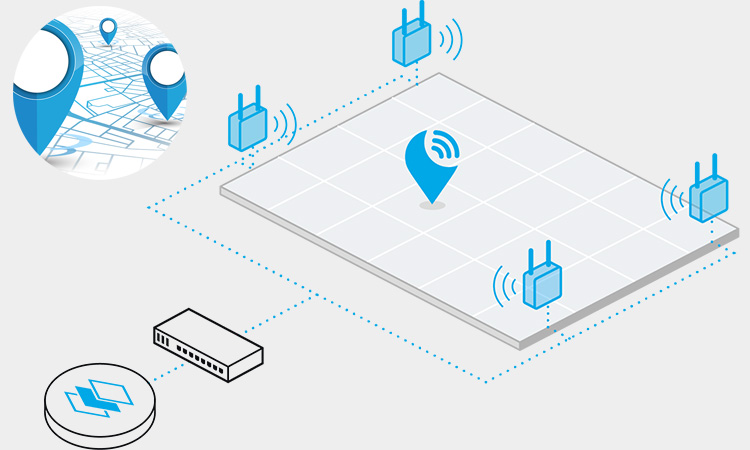
이러한 무선 주파수 기술은 UWB, Bluetooth, WiFi 및 RFID가 될 수 있습니다. 전송 세트 간에 무선 통신을 수행할 수 있습니다. 수신 장치 또는 장치에서 전송 및 수신을 모두 수행합니다. 그들은 주로 대상의 위치를 결정합니다. 태그가 무선 신호를 방출하면 수신자는 즉시 수신하여 서버로 보냅니다. 백그라운드의 RTLS 소프트웨어는 이를 동기식으로 처리합니다. 앵커가 신호를 받으면 삼각 측량 또는 기타 유사한 방법을 사용하여 태그의 정확한 위치를 계산합니다. 이 계산은 RTLS 소프트웨어의 일부인 지정된 위치 엔진에 의해 수행됩니다.
대부분의 트럭, 사람, 애완 동물 및 산업 추적 애플리케이션은 RTLS를 사용합니다. 인증된 사용자는 일반적으로 로컬 컴퓨터 또는 클라우드 플랫폼을 통해 표시된 항목의 위치 데이터를 얻을 수 있습니다.
실시간 위치 시스템의 추적 범위는 얼마나 됩니까?
실시간 위치 시스템의 범위는 기본 RF 기술 및 배포 유형에 따라 달라질 수 있습니다. 일부 사용자는 조립 라인 아래로 이동할 때 특정 부품의 정확한 위치와 같이 좁은 영역 내에서 추적의 정확성이 필요합니다. 일부 사용자는 도달하기 어려운 특정 영역에 있는 컨테이너, 장비 또는 사람과 같은 자산을 추적하기 위해 더 넓은 범위가 필요합니다.
범위는 사용되는 실시간 위치 시스템에 따라 다릅니다. 처프 및 WiFi 기반 시스템은 300미터 이상 원격 액세스를 제공할 수 있습니다. UWB 및 BLE와 같은 다른 기술은 제한된 범위에서만 항목을 추적할 수 있습니다.
RTLS의 유형은 무엇입니까?
많은 기술이 RTLS 애플리케이션을 구현할 수 있습니다. RTLS를 구현할 때 요구 사항에 따라 올바른 기술을 선택하는 것이 중요합니다.
라디오 실시간 위치 시스템 태그: 패시브 RFID 태그
패시브 UHF(Ultra High Frequency) RFID는 RTLS 효율성을 창출하는 방법을 제공합니다. 우리는 이것을 가능한 가장 쉬운 방법으로 할 수 있습니다. 그것은 특정 방이나 건물의 입구/출구에 있는 초크 포인트를 덮는 것입니다. 차단 지점 위치에 RFID 리더와 안테나를 설치하고 RFID 태그를 사용하여 이 자산에 태그를 지정했습니다. 이 작업을 통해 특정 읽기 시간에 항목 위치를 얻을 수 있습니다. 또한 영역을 분할하고 전략적으로 RFID 안테나를 배치하여 영역 커버리지를 달성할 수 있습니다. 해당 영역의 RFID 안테나는 태그가 지정된 자산에 신호를 보냅니다. 반면 수동형 UHF RFID는 다른 RTLS 기술과 동일한 태깅 방법을 사용합니다. 둘 다 몇 미터마다 안테나를 설치하고 많은 측정을 수행하여 태그가 지정된 자산의 위치를 결정할 수 있습니다. 추적 영역 내에서 보다 세분화된 태깅 방법을 사용할 수도 있습니다.
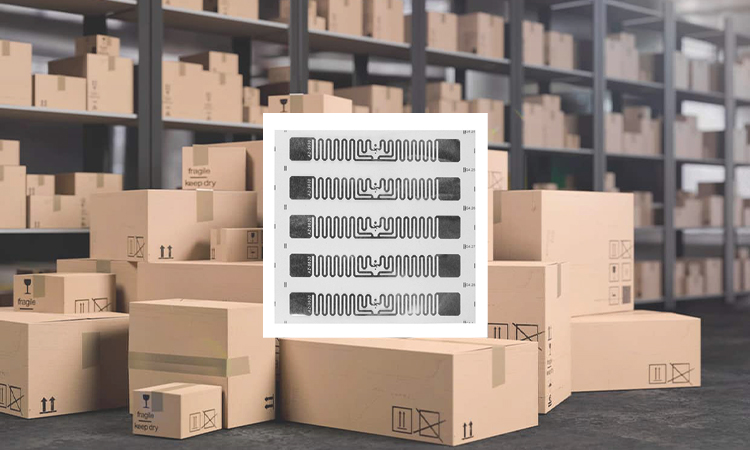
- 패시브 RFID 애플리케이션: 공급망 추적, 재고 추적, 자산 추적
- 패시브 RFID 적합 대상: 지역 커버리지, 초크 포인트 커버리지, 지역 커버리지
- 패시브 RFID의 장점: 상대적으로 저렴한 태그, 표준화된 기술
- 패시브 RFID 단점: 금속 및 액체 간섭에 취약, 다중 경로 환경
관련 기사: 패시브 RFID 태그는 무엇에 사용됩니까?
라디오 실시간 위치 시스템 태그: 활성 RFID 태그
당사의 일반적인 능동형 UHF RFID는 대부분 대규모 실외 환경에서 RTLS에 사용됩니다. 능동형 RFID의 판독 범위는 최대 수백 미터입니다. 수동형 RFID 태그와 달리 능동형 RFID 태그는 리더가 에너지를 얻기 위해 신호를 보낼 필요가 없습니다. 내부에 배터리가 포함되어 있어 지속적인 신호 방송이 가능합니다. 사용자는 제조업체의 옵션에 따라 태그 브로드캐스트 사이의 간격 길이를 설정할 수 있습니다.
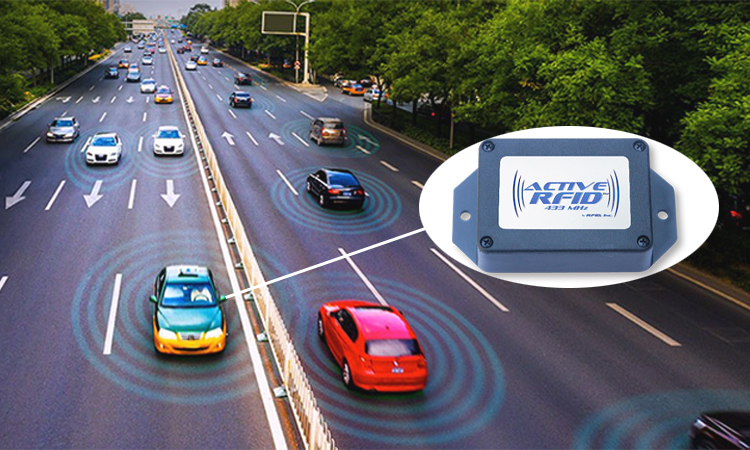
태그는 고유 ID 번호와 프로그래밍된 데이터 정보를 수신기로 보냈습니다. 이 데이터 정보는 신호 강도 또는 환경 측정일 수 있습니다. 지정된 위치에 설치된 리더는 활성 RFID 태그 신호를 수신하면 자신의 정보와 위치를 기록합니다. 그런 다음 위치 정보를 동기화하고 호스트 또는 네트워크/클라우드 데이터베이스에 업로드합니다.
- 액티브 RFID 애플리케이션: 차량 추적, 채광
- 능동형 RFID 적합 대상: 지역 취재, 지역 취재
- 액티브 RFID의 장점: 매우 견고한 태깅 옵션, 원격 측정 옵션
- 액티브 RFID의 단점: 비싸고 활성 RFID에 대한 표준이 없음
관련 기사: 활성 RFID 태그란 무엇입니까?
저전력 블루투스 실시간 위치 시스템
대부분의 사람들은 실시간 위치 기능을 위해 저전력 블루투스(BLE)를 사용합니다. 사용자 설정에 따라 BLE 태그는 중단 없이 주변 영역에 신호를 전파할 수 있습니다. 모든 Bluetooth 지원 전자 장치는 이러한 신호를 수신할 수 있습니다. 일부 일반적인 Bluetooth 지원 장치는 Bluetooth 수신기, 비콘 및 스마트 장치입니다. 사용자는 블루투스 수신기를 사용하여 BLE 또는 특정 좌표로 고정된 위치에 장착된 비콘을 사용하여 RTLS를 설정할 수 있습니다.
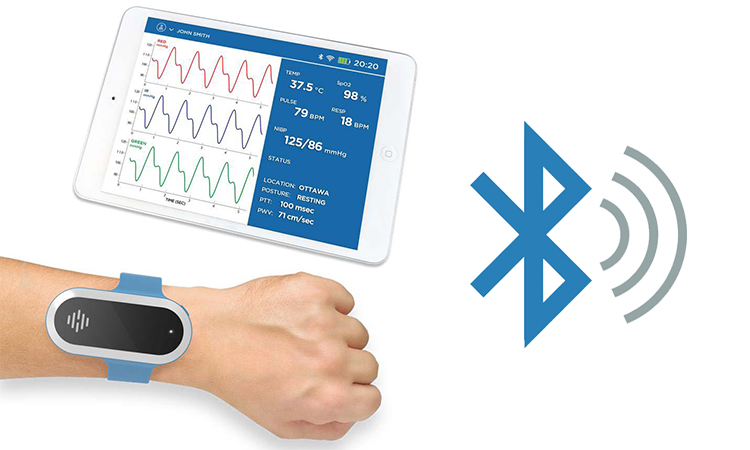
사용자가 BLE의 RTLS 기능을 설정하면 자동으로 실행됩니다. BLE 트랜스폰더가 지정된 수신 범위에 들어갑니다. 응답기는 위치 정보를 수신기에 직접 전달합니다. 다음으로 수신기는 WiFi를 통해 BLE 게이트웨이에 정보를 보냅니다. BLE 게이트웨이는 위치 정보를 동기식으로 기록하고 데이터를 호스트 또는 네트워크/클라우드 데이터베이스로 보냅니다.
- BLE 애플리케이션: 위치 태깅, 자산 추적, 의료 센서
- 적합: 블로킹 포인트 커버리지, 영역 커버리지
- BLE 장점: 표준화된 기술, Bluetooth 장치와 작동, 원격 측정 옵션
- BLE 단점: 라벨은 수요가 많고 비용이 높습니다.
글로벌 포지셔닝 시스템 (GPS)
GPS(Global Positioning System)는 GNSS(Global Navigation Satellite System)라고도 합니다. 그것은 거의 전 세계적으로 상당히 넓은 커버리지 영역을 가지고 있습니다.GPS는 NAVSTAR GPS 위성 시스템에서 그 이름을 얻습니다. 미국에서 GNSS 내비게이션 또는 포지셔닝에 사용되는 가장 잘 알려진 위성 시스템입니다. 대부분의 경우 GNSS 태그를 사용하여 실시간 포지셔닝 기능을 위해 자산에 태그를 지정할 수 있습니다. 이러한 태그에는 마찬가지로 WiFi, Bluetooth 또는 셀룰러 연결 기술이 있습니다.
논스톱 지구 궤도를 도는 위성은 전파를 통해 GNSS 태그 또는 스마트 장치에 신호를 전송합니다. 방출된 신호는 궤도 위치와 정확한 원자 시계의 시간에 대한 정보를 전달합니다. 태그는 이러한 위성에서 정보를 수신합니다. 또한 이 데이터를 전역 좌표와 일치시켜 태그의 위치를 계산합니다. 이 좌표 정보는 태그의 보조 기술(예: Bluetooth)을 통해 호스트 컴퓨터로 전송됩니다.
- GPS 애플리케이션: 포지셔닝, 내비게이션
- GPS 적합 대상: 로컬 커버리지, 글로벌 커버리지(최대 98%)
- GPS 장점: 비용만 표시, Telemetry 옵션
- GPS 단점: 높은 태깅 비용, 제한된 실외 추적
적외선
적외선의 전자기 스펙트럼은 매우 낮고 육안으로 감지할 수 있는 가시광선보다 낮습니다. 특정 제한 사항이 있습니다. 예를 들어 일부 두꺼운 고체 물체의 경우 적외선이 직접 통과할 수 없습니다. 그러나 다양한 공간과 방에서 사용하기에도 적합합니다. WiFi 또는 Bluetooth와 같은 기술과 함께 적외선 태그를 사용하면 넓은 영역에서 상당한 정확도를 제공할 수 있습니다. 적외선 본체에는 고유 ID로 변조된 신호를 지정된 방이나 영역으로 전송하는 작은 배터리가 포함되어 있습니다. 사용자는 필요에 따라 태그에서 데이터 정보를 수신하기 위해 고정된 위치에 적외선 수신기를 설치할 수 있습니다. 수신기는 WiFi 또는 LAN을 통해 연결하고 이 데이터 정보를 호스트 컴퓨터 또는 데이터베이스로 전달합니다.
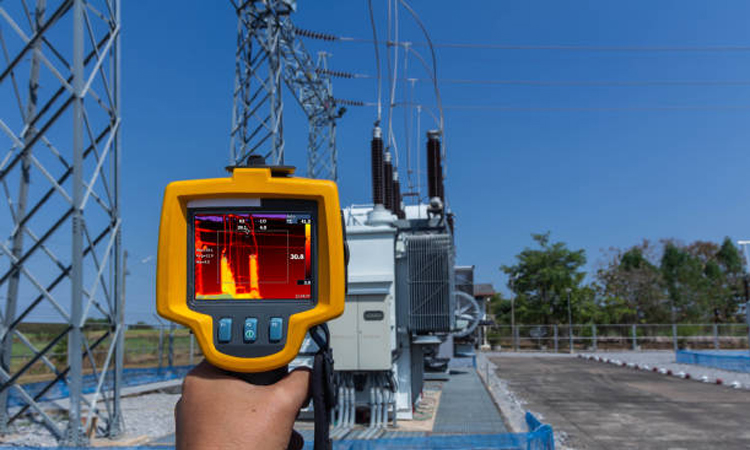
- 적외선 방사 응용 분야: 적외선 레이더, 적외선 감지기
- 다음에 적합한 적외선: 지역 범위
- 적외선 방사선 이점: 저비용, 고정확도
- 적외선 방사의 단점: 다중 경로 문제, 표준 없음
RFID와 RTLS의 차이점은 무엇입니까?
RFID와 RTLS는 물체나 사람을 찾는 데 사용되는 두 가지 유형의 추적 기술입니다. 그들 사이의 주요 차이점은 다음과 같습니다.
- 범위: RFID는 몇 미터 이내의 항목만 추적할 수 있는 반면 RTLS는 수백 미터와 같이 훨씬 더 넓은 영역을 추적할 수 있습니다.
- 정도: RFID는 수 센티미터 이내의 물체나 사람을 정확하게 추적할 수 있습니다. RTLS는 일반적으로 몇 미터 내에서 정확합니다.
- 실시간 추적: RTLS는 즉각적인 위치 업데이트를 제공하는 반면 RFID는 태그의 위치를 감지하기 위해 근처에 리더가 있어야 합니다.
- 비용: RFID 태그는 일반적으로 저렴하지만 대규모 시스템의 경우 인프라 설정 비용이 더 많이 들 수 있습니다. RTLS는 일반적으로 전체적으로 더 비쌉니다.
- 애플리케이션: RFID는 재고 관리, 출입 통제, 개별 항목 추적에 자주 사용됩니다. RTLS는 위치 기반 서비스, 차량 관리 및 대규모 시설의 자산 추적에 더 많이 사용됩니다.
이 표는 RFID와 RTLS의 차이점을 설명합니다.
| 특징 | RFID | RTLS |
|---|---|---|
| 전체 양식 | 무선 주파수 식별 | 실시간 위치 시스템 |
| 용법 | 개체 식별 및 추적에 사용 | 사람, 사물, 자산을 실시간으로 추적하고 찾는 데 사용 |
| 기술 | 전파를 사용하여 물체에 부착된 RFID 태그에서 데이터를 읽고 캡처합니다. | GPS, Wi-Fi 및 Bluetooth를 포함한 다양한 기술을 사용하여 물체를 추적하고 찾습니다. |
| 정확성 | 최대 99%의 정확도를 가질 수 있습니다. | 최대 10cm의 정확도를 가질 수 있습니다. |
| 거리 | 몇 피트 떨어진 곳에서 태그를 읽을 수 있습니다. | 몇 미터 이내의 물체를 찾을 수 있습니다. |
| 비용 | 일반적으로 RTLS보다 낮은 비용 | 일반적으로 RFID보다 높은 비용 |
| 구현 | 리테일, 헬스케어, 물류 등 다양한 산업군에서 구현 가능 | 제조, 창고 및 의료와 같은 산업에서 일반적으로 사용됨 |
| 실시간 추적 | 실시간 추적용으로 설계되지 않음 | 실시간 추적 및 모니터링을 위해 설계됨 |
| 데이터 | 개체에 대한 제한된 데이터를 캡처합니다. | 위치, 이동 및 환경 조건을 포함하여 개체에 대한 보다 자세한 데이터를 캡처합니다. |
요약하면 RFID와 RTLS는 물체나 사람을 추적하는 데 사용되지만 범위, 정밀도, 실시간 추적 기능, 비용 및 응용 분야에서 다릅니다. 물론 기술 선택은 애플리케이션의 특정 요구 사항에 따라 다릅니다.
관련 기사: RTLS와 RFID: RFID와 RTLS 추적의 차이점
실시간 위치 시스템의 응용 사례
긴급 전화
기업은 비상 대피 중에 RTLS 배지로 직원의 위치를 추적할 수 있습니다. 긴급 상황에서 소집 시스템은 도착하는 직원을 안전한 것으로 자동으로 기록합니다. 이 위기 상황에서 비상 관리자는 위험에 처할 수 있는 사람들의 목록을 얻기 위해 점호를 서둘러 할 필요가 없습니다. 위험에 처한 직원의 실시간 위치 정보를 최초 대응자에게 제공할 수 있습니다. 그들은 구조에서 그들을 도울 것입니다.
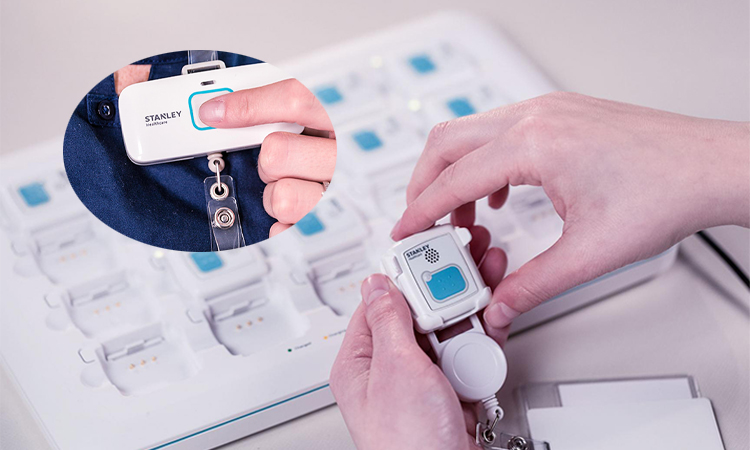
의료 분야의 실시간 위치 시스템: 환자 모니터링
데이터가 처리되는 속도는 삶과 죽음의 차이인 의료 산업에 매우 중요합니다. 사람들은 환자 모니터링 시스템(예: 심박수 모니터)에서 실시간 위치 시스템을 사용할 수 있습니다. 시스템에서 감지한 데이터는 임상의가 환자의 안전과 건강을 보장하는 데 도움이 됩니다. 환자의 생명이 위험에 처하면 시스템이 경보를 울립니다. 의사가 가장 먼저 도착하여 도움을 줄 것입니다.
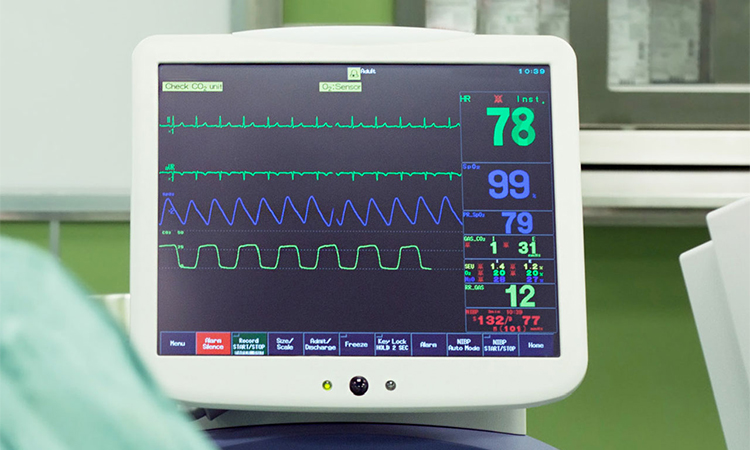
관련 기사: 병원의 원격 측정 장치
물류 분야의 실시간 위치 시스템
실시간 위치 시스템(RTLS)은 물류 및 공급망 관리의 필수 도구가 되었습니다. 물류 네트워크 내에서 자산, 차량 및 인력의 위치와 이동에 대한 실시간 가시성을 제공합니다. 이를 통해 조직은 운영을 최적화하고 비용을 절감하며 고객 만족도를 높일 수 있습니다.
우리가 보는 일반적인 실시간 위치 시스템은 내비게이션입니다. 위치와 관련하여 A지점에서 B지점으로 이동하는 방법에 대한 정보를 제공합니다. GPS, 지도 및 모바일 셀룰러 기술은 훨씬 더 강력합니다. 보다 복잡한 내비게이션 서비스를 제공할 수 있습니다.
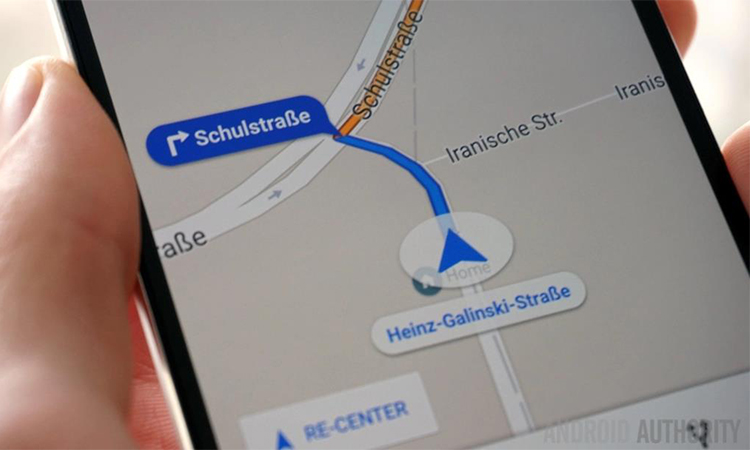
산업용 애플리케이션의 실시간 위치 시스템
연속 생산이 중단되지 않는 산업 분야에 적합합니다. 이러한 시스템은 문제 해결을 위해 데이터와 프로세스를 모니터링합니다. 그들은 회사가 제품 품질을 유지하고 성능을 향상시키는 데 도움을 줍니다. 석유 및 가스 산업의 대부분의 회사는 프로세스 제어 시스템을 사용합니다. 이를 통해 기업은 보다 효율적이고 안전하게 시설을 운영할 수 있습니다. 또한 기업이 다운타임으로 인한 손실을 줄이는 데 도움이 됩니다.
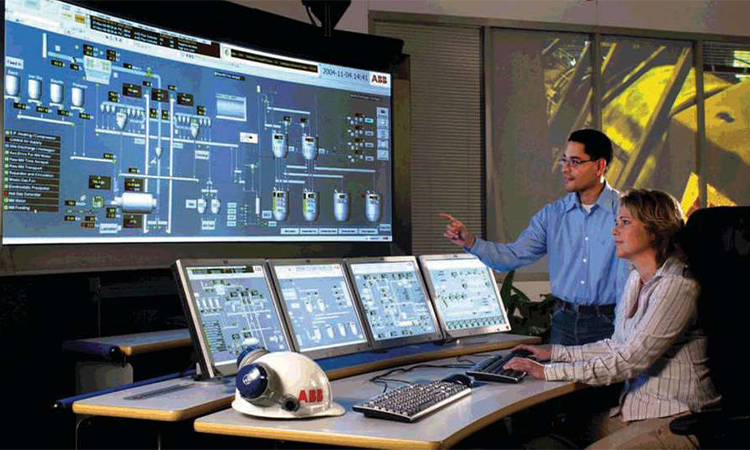
자산 추적의 실시간 위치 시스템
장비 및 도구의 움직임을 모니터링하고 추적하는 것은 RTLS의 필수 기능입니다. 올바른 추적 기술을 사용하면 대규모 시설에서 작업자가 두고 간 도구를 찾을 수 있습니다. 또한 장비를 안전하게 유지하고 장비가 지정된 영역을 벗어나지 않도록 합니다.
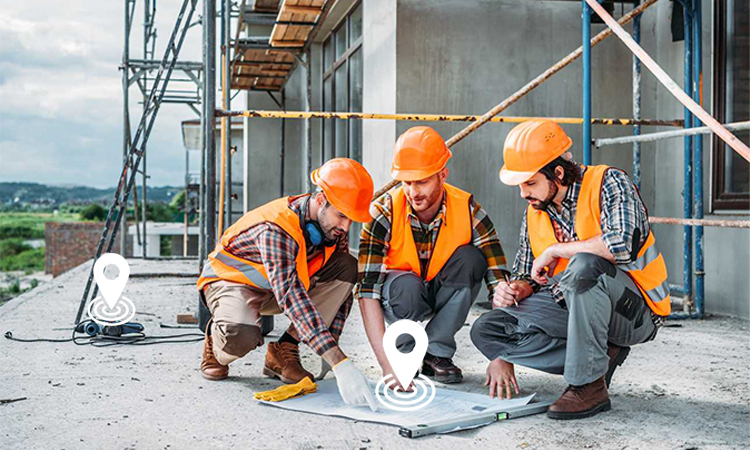
실시간 위치 추적 시스템 시장 동향
실시간 위치 시스템(RTLS)은 자산, 장비 및 사람을 실시간으로 추적하고 찾습니다. 글로벌 RTLS 시장은 빠르게 확장되고 있으며 2021년에서 2026년 사이에 약 25%의 CAGR로 성장할 것으로 예상됩니다. RTLS 시장의 몇 가지 중요한 추세를 자세히 살펴보겠습니다.
- 의료 분야에서 RTLS는 더욱 보편화되고 있습니다. 의료 산업은 RTLS 시장에서 가장 빠르게 성장하는 분야 중 하나이며 환자 추적, 자산 추적 및 직원 추적에 응용 프로그램이 있습니다. COVID-19 대유행이 시작되면서 병원에서는 실시간으로 환자와 의료 장비를 추적하기 위해 RTLS를 사용하고 있습니다.
- 제조 및 물류 분야에서 RTLS는 점점 인기를 얻고 있습니다. 제조 및 물류 부문은 재고를 추적하고 공급망을 모니터링하며 작업 흐름을 최적화하기 위해 수년 동안 RTLS를 사용해 왔습니다. Industry 4.0 기술의 채택으로 이러한 부문에서 RTLS에 대한 수요가 더욱 증가했습니다.
- RTLS 기능은 5G 및 IoT로 향상되었습니다. 5G와 사물 인터넷(IoT)의 출현으로 RTLS 시스템의 기능이 크게 향상되었습니다. 5G를 사용하면 더 빠른 데이터 전송 속도, 더 낮은 대기 시간, 향상된 장치 연결이 가능합니다. 이것은 보다 효율적이고 정확한 RTLS 솔루션을 가능하게 할 것입니다.
- 다른 기술과의 통합. RTLS 시스템은 AI, 기계 학습 및 빅 데이터 분석과 같은 다른 기술과 통합되고 있습니다. 이러한 통합을 통해 보다 정교한 데이터 분석이 가능하고 기업이 더 나은 결정을 내릴 수 있습니다.
- 무선 RTLS 솔루션은 점점 대중화되고 있습니다. 무선 RTLS 솔루션은 유연성, 확장성 및 배포 용이성으로 인해 점차 대중화되고 있습니다. 이러한 솔루션은 널리 사용 가능하고 사용하기 쉬운 Wi-Fi, Bluetooth 및 RFID와 같은 기술을 사용합니다.
과학의 발전으로 실시간 위치 시스템을 위한 수많은 옵션이 있습니다. 사람들은 Bluetooth, RFID 및 광학과 같은 추적 기술을 선택하여 사람이나 항목의 위치를 확인할 수 있습니다. 사람들이 자신의 위치를 보다 쉽게 찾을 수 있는 방법을 제공합니다. 다양한 산업 분야에 많은 이점이 있습니다. 곧 더 많은 곳에서 보게 될 것입니다.
*비디오 소스:
실시간 위치정보시스템 Q&A에 대하여
-
실시간 위치 시스템이란 무엇이며 어떻게 작동합니까?
RTLS(Real-Time Location System)는 정의된 영역 내에서 사람이나 물체의 실시간 위치를 추적하기 위해 하드웨어와 소프트웨어의 조합을 사용하는 기술입니다. RTLS는 Wi-Fi, Bluetooth, RFID, GPS 및 기타 기술과 같은 무선 신호를 사용하여 위치 데이터를 중앙 소프트웨어 플랫폼으로 전송합니다.
-
사용 가능한 다양한 유형의 실시간 위치 시스템은 무엇이며 장점과 단점은 무엇입니까?
사용 가능한 다양한 유형의 실시간 위치 시스템에는 Wi-Fi 기반, Bluetooth 기반, RFID 기반, GPS 기반 및 하이브리드 시스템이 포함됩니다. 각각은 특정 사용 사례에 따라 장점과 단점이 있습니다. 예를 들어 Wi-Fi 기반 시스템은 정확도가 높고 실내 추적에 가장 적합하며 GPS 기반 시스템은 실외 추적에 더 정확합니다.
-
실시간 위치 시스템은 얼마나 정확하며 정확도에 영향을 미치는 요소는 무엇입니까?
RTLS의 정확도는 사용된 기술, 환경 및 기타 요인에 따라 달라질 수 있습니다. Wi-Fi 기반 시스템은 몇 미터의 정확도를 달성할 수 있는 반면 GPS 기반 시스템은 서브미터 정확도를 달성할 수 있습니다. 정확도에 영향을 미치는 요소에는 신호 강도, 간섭, 액세스 포인트 또는 태그의 수와 위치가 포함됩니다.
-
실시간 위치 시스템의 가장 일반적인 응용 프로그램은 무엇이며 조직에 어떤 이점이 있습니까?
RTLS는 의료, 물류, 소매 및 제조를 포함한 많은 산업에서 사용됩니다. 일반적인 응용 프로그램에는 자산 추적, 재고 관리, 직원 추적 및 안전 모니터링이 포함됩니다. RTLS는 조직이 효율성을 개선하고 비용을 절감하며 안전을 강화하도록 도울 수 있습니다.
-
특정 사용 사례에 대한 실시간 위치 시스템을 선택할 때 주요 고려 사항은 무엇입니까?
주요 고려 사항에는 시스템의 정확성과 신뢰성, 구현 및 유지 관리 비용, 기존 인프라 및 시스템과의 호환성, 공급업체에서 제공하는 지원 수준이 포함됩니다.
